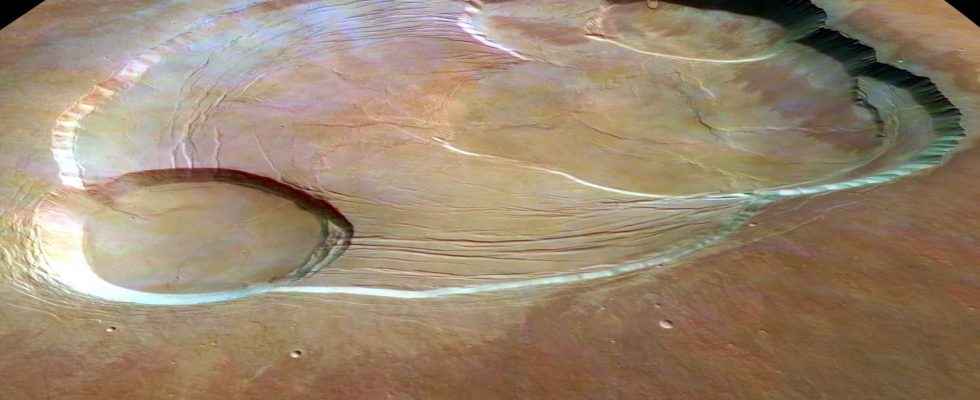Having passed under the radar during 50 years of exploration, a giant volcano has just been discovered on the planet Mars. An astonishing find that opens new doors to the exploration of the red planet.
Although we think we know everything about our neighbor the planet Mars, repeatedly flown by space probes and surveyed since the 90s by increasingly efficient rovers, the small planet red still has many surprises in store for us. During a conference given in Texas this Wednesday, March 13, 2024, scientists from the SETI Institute revealed a surprising discovery: a giant volcano, larger than Everest, until then completely unnoticed in a region that is nevertheless emblematic Of March !
Measuring more than 9 kilometers high and 450 kilometers in diameter, this geological monster nestles in an area well known to scientists, bordered on one side by Noctis Labyrinthus and on the other by Valles Marineris and their spectacular canyons. But despite 50 years of exploration of the Martian surface, it had never been identified. And for good reason, the volcano is so eroded that its shape is much less recognizable than that of the gigantic Olympus Mons peaking at more than 21 kilometers high. It was while studying the remains of a glacier that researchers noticed a set of geological structures that caught their attention. “We were examining the geology of an area where we had found glacier remains last year when we realized we were inside a huge and extremely eroded volcano.” says Dr Pascal Lee at the origin of the study.
This unexpected discovery could mark the starting point for new Martian explorations. Indeed, the size and structure of this volcano suggest that it may have been active for a long period and until very recently. Scientists could therefore use this geological treasure to better understand the history of this region of Mars. In addition, the presence of ice in the volcano represents an opportunity for scientists looking for signs of extraterrestrial life…
